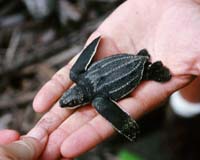| . |  |
. |
Nairobi (AFP) Nov 30, 2009 Wildlife officials here Monday displayed more than half a tonne of recently-seized ivory, reflecting a rise in poaching they said was prompted by the controversial sale of stockpiled tusks last year. The seizures in Kenya were part of what officials said was the largest-ever anti-poaching operation in East Africa, involving authorities in six states. "Tons of illegal ivory have been seized and hundreds of people arrested in the largest-to-date international operation targeting wildlife crime across Eastern Africa," the Kenya Wildlife Service (KWS) said. KWS official Patrick Omondi said the seizures showed an increase in poaching in Kenya and elsewhere, and highlighted a clear link with the UN-authorised one-off sale of more than 100 tonnes of stockpiled ivory by four southern African countries in 2008. "We've seen an increase in poaching in the country and one of the factors is the sale," said Omondi. "Kenya opposed it on the grounds it would stimulate illegal killing," Omondi said. An official from Interpol's wildlife crime unit said: "The argument was that if we sold those stockpiles it would satisfy demand and put an end to poaching. "That argument was false. When that ivory was sold, poaching was stimulated," the official said. Interpol and other regional and international organisations were involved in the seizure operations that also included Burundi, Ethiopia, Rwanda, Tanzania and Uganda. Detailed results from those countries have not yet been released. The 568 kilos (1,252 pounds) put on display by Kenyan authorities in Nairobi on Monday was in addition to 532 kilos seized in the initial phase of the operation some three months ago. The wildlife service's security chief, Peter Leitoro, claimed the seizures were a serious blow to poachers who were increasingly sophisticated and dangerous. "We have seen the criminals getting more organised. In the past the charcters you were dealing with had bows and arrows. Today they are individuals with firearms," he told reporters. The wildlife service used sniffer dogs to detect much of the ivory on display. The ivory trade was banned in 1989 because poachers were wiping out elephant populations. Kenya's elephant population shrank from 160,000 in 1973 to one tenth of that by the time the ban was introduced. The ban on the international trade in ivory, the establishment of the KWS and anti-poaching measures have enabled the population to climb back up to some 35,000 currently. The controversial UN-approved auction in October last year involved Botswana, Namibia, South Africa and Zimbabwe and was conducted under the supervision of the Convention on International Trade in Endangered Species of Wild Fauna and Flora (CITES). Share This Article With Planet Earth
Related Links Darwin Today At TerraDaily.com
 For giant turtles, beach offers a precarious start to life
For giant turtles, beach offers a precarious start to lifePointe Denis, Gabon (AFP) Nov 27, 2009 After two hours of scouring the beaches of Pongara National Park in the dark night, Joan Ikoun-Ngossa and his patrol finally find a leatherback turtle. It has just laid its eggs and is struggling awkwardly back to the sea. For its young, however, there is just a one in a thousand chance of making it to adulthood, thanks to a deadly combination of humans, natural predators, pollution and ... read more |
|
| The content herein, unless otherwise known to be public domain, are Copyright 1995-2009 - SpaceDaily. AFP and UPI Wire Stories are copyright Agence France-Presse and United Press International. ESA Portal Reports are copyright European Space Agency. All NASA sourced material is public domain. Additional copyrights may apply in whole or part to other bona fide parties. Advertising does not imply endorsement,agreement or approval of any opinions, statements or information provided by SpaceDaily on any Web page published or hosted by SpaceDaily. Privacy Statement |